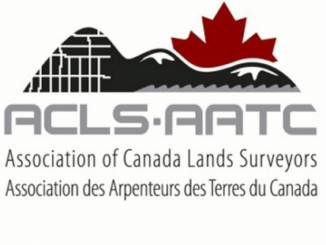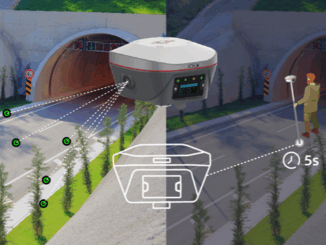OTTAWA, Esri Canada User Conference – October 6, 2015 – Parks Canada fosters public understanding, appreciation and enjoyment of Canada’s natural and cultural heritage for present and future generations. The Agency manages national parks, national historic sites and national marine conservation areas across the country. Recognizing that everything the Agency does is related to location, it began integrating disparate geographic information system (GIS) implementations into one enterprise GIS that makes data more accessible throughout the organization. This has allowed the Agency to create new applications that increase the effectiveness of its operations nationwide. For this outstanding work, Esri Canada today presented Parks Canada with an Award of Excellence in GIS.
Parks Canada’s field offices maintain their own GIS and data to support various operations including, ecological management, law enforcement and infrastructure management. To eliminate duplicate data and streamline workflows, the Agency has established an enterprise GIS built on Esri’s ArcGIS platform.
“Having a common GIS platform unifies our various systems, applications and workflows, and allows us to leverage data so we can map it once and use it many times,” said Greg Thompson, Chief Information Officer, Parks Canada. “This integrated approach facilitates better collaboration across the Agency and with our partners so we can find solutions to challenges and achieve advances that no single group can accomplish alone.”
ArcGIS was the logical solution for their enterprise GIS because Esri technology has been widely used by Parks Canada and their federal, provincial and municipal partners. The platform provides powerful data integration, mapping and analysis capabilities; it also includes ready-to-use content and templates to quickly build and deploy Web maps and applications accessible via multiple devices. Through the enterprise GIS, the Agency has developed several national applications for their staff to use, including:
- Parks Canada Atlas – The Atlas provides basemaps of the Agency’s parks, historic sites, waterways and marine conservation areas that range from a Canada-wide scale down to 1:36,000. Unlike other publicly available map services, the Atlas maps have less clutter, enabling users to customize them to the issues at hand. Users can turn on the data layers relevant to them, add their own GIS or GPS data, drawings or annotations, create and print maps directly from the Atlas or paste them into word-processing documents, presentations and posters. The Atlas enables Parks Canada staff to create basic maps without the services of a GIS Specialist.
- National Integrated Realty System (NIRS) –This application enables the Agency’s 50-member Realty team to link their documents (property ownership documents, leases and licences) to land parcels. As the largest land manager in the federal government, this integrated system will provide a modern tool for the delivery of realty services that are time-sensitive and critical to the effective operations of Parks Canada. The NIRS allows users to georeference or “rubber-sheet” survey plans onto the map. Users identify several common points between the survey and the GIS map. The system then stretches the survey so the common points line up, and the survey becomes georeferenced. A transparency slider allows the user to fade the survey in and out to see how it corresponds to other map information such as buildings or trails. This reduces the time required for staff to find and understand surveys.
The enterprise GIS also serves up maps and data to the Agency’s incident and event management system as well as other systems being developed for asset and cultural resource information management, and a new national dispatch system. It also allows the Agency to contribute data to the Government of Canada Open Data Portal. As well, the system will enable GIS technicians in their field offices to share common standards, templates and models for quickly developing targeted applications.
“Parks Canada has embraced GIS as a platform for increased efficiency, collaboration and innovation,” remarked Alex Miller, president, Esri Canada. “Their move from project-based GIS applications to an enterprise GIS allows them to develop national applications that will help ensure sustainable parks management for the benefit of all Canadians.”
Read more about Geomatics in Parks Canada. To learn more about ArcGIS, visit esri.ca/arcgis.
About Esri Canada
Founded in 1984, Esri Canada provides enterprise geographic information system (GIS) solutions that empower businesses, governments and educational institutions to make timely, informed and mission-critical decisions by leveraging the power of geography. The company distributes the world’s leading GIS software from Esri, Schneider Electric, Cityworks–Azteca Systems, Inc. and other technology partners. Headquartered in Toronto, the company serves over 10,000 customers from 16 regional offices across Canada. Esri Canada has joined the elite rank of Canada’s Best Managed companies and has been named to the Branham300. Information about the company can be found at esri.ca. Follow Esri Canada on Twitter, Facebook, YouTube and LinkedIn.




Be the first to comment